Abstract
In global agriculture, Turkey is the largest producer of apricots, reaching 803kt in 2022. This trend shows that Turkey has been a major producer of apricots for many years. Meanwhile, other major producers include Iran, Italy, and Spain, but their production is far behind Turkey. Regional climate and soil conditions are important for apricot production, and these countries have their own unique production areas. In addition, production volume may fluctuate due to changes in demand and the influence of climatic conditions. However, while Turkey boasts an overwhelming production volume, other countries are also focusing on producing apricots that take advantage of their own quality and characteristics. These factors combine to shape the global apricot market.
Apricot production (worldwide)
Looking back at the data on apricot production, Turkey has consistently been one of the leading producers from 1961 to 2022, with a peak of 985kt recorded in 2017. However, the latest data shows a decline of 81.5% from the peak production. This trend suggests some of the factors that affect apricot production in Turkey. These include climate change and extreme weather changes, advances in agricultural technology, and fluctuations in market demand. On the other hand, other major producing countries are also exposed to these factors, and apricot production shows certain fluctuations. In addition, differences in production technology and agricultural policies in different regions also affect the production volume of each country. Considering these characteristics and trends, it will be important for major producing countries, including Turkey, to focus on sustainable agricultural practices and market demand in the future.
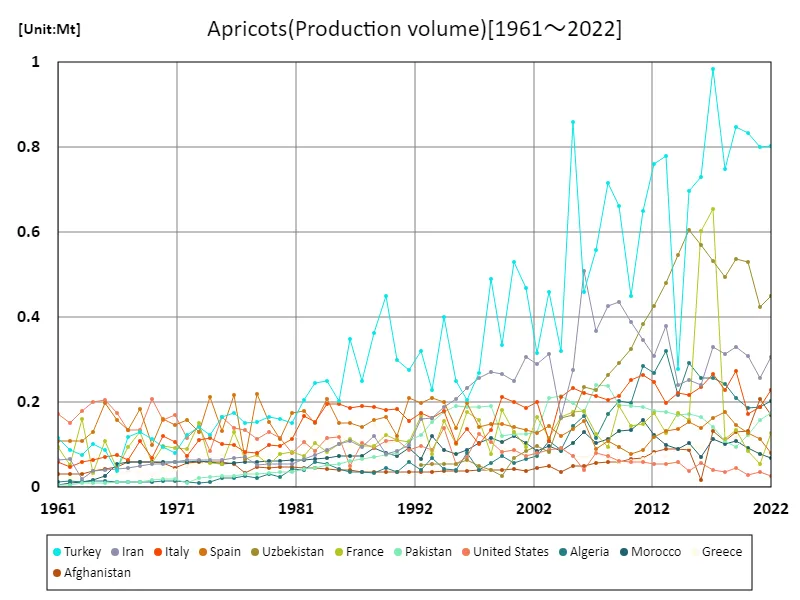

The maximum is 985kt[2017] of Turkey, and the current value is about 81.5%
Apricot production (latest year, worldwide)
According to data for 2022, Turkey is the largest producer of apricots in global agriculture, at 803kt. This figure indicates that Turkey plays a pivotal role in apricot production, given that the overall average is 50.2kt. On the other hand, the production of other major producing countries is relatively small, with Turkey’s production accounting for the majority of the total. This trend reflects the fact that Turkey is a major apricot producing region, with geographical and climatic conditions suitable for apricot cultivation. In addition, the stable demand for apricots is also considered to be one of the factors that will lead Turkey to expand production. Such characteristics are strengthening Turkey’s influence in the global apricot market. However, factors such as climate change and changes in market demand may cause fluctuations in production in the future. Taking these factors into account, measures are required to ensure the sustainability of global apricot production.
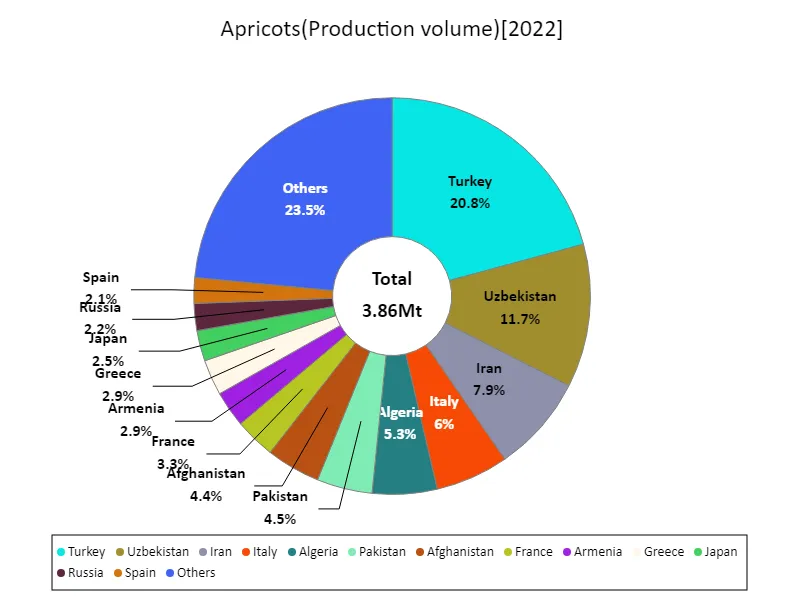

The maximum is 803kt of Turkey, the average is 50.2kt, and the total is 3.86Mt
Apricot production (continent)
The latest data on agricultural apricot production shows that it will be 2.65 Mt across Asia in 2022, which is the highest ever. The data highlights that Asia is the leading producing region for apricots. There are several characteristics and trends behind the record high apricot production in Asia. Firstly, improvements in agricultural techniques and cultivation methods across the Asian region have contributed to the increase in production. In addition, there are many regions where the climatic conditions and soil suitability are suitable for apricot cultivation, which has led to an increase in production. In addition, the modernization of agriculture in the Asian region and response to market needs have also contributed to the increase in production. However, there are also risk factors such as climate change and natural disasters, which may affect future apricot production. Therefore, the adoption of sustainable agricultural practices and strengthening risk management are key challenges for apricot production in the Asian region.
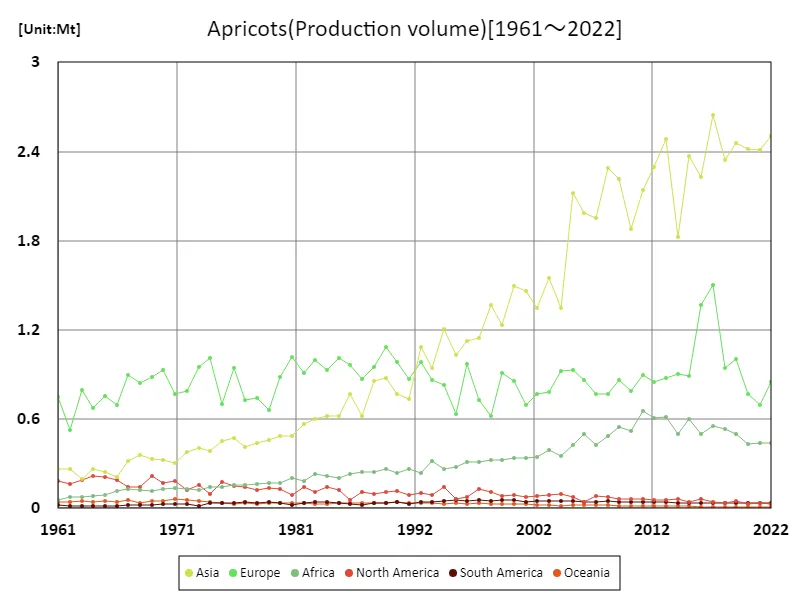

The maximum is 2.65Mt[2017] of Asia, and the current value is about 94.6%
Apricot production (latest year, continental)
The largest overall production of agricultural apricots in 2022 will be in Asia, at 2.5Mt, with an average of 644kt. This confirms that Asia is the leading apricot producing region, even from past data. There are several characteristics and trends behind the largest apricot production in Asia. First, Asia has many suitable climatic conditions and soils, which are suitable for apricot cultivation. In addition, in recent years, advances in agricultural technology and improvements in cultivation methods have contributed to the increase in production. In addition, the increasing demand for apricots has also influenced the increase in production. On the other hand, there are also risk factors such as climate change and natural disasters, which may affect apricot production in the future. Given this background, the adoption of sustainable agricultural practices and strengthening risk management are key issues for apricot production in Asia.
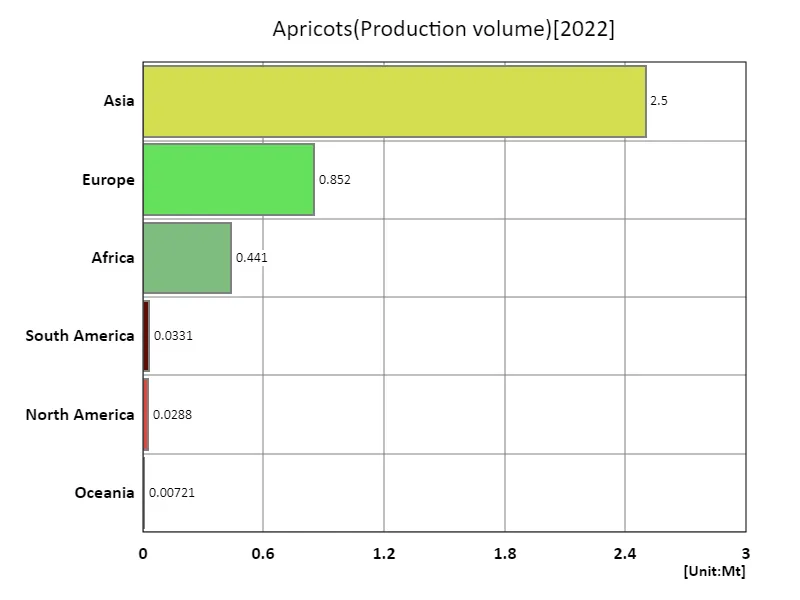

The maximum is 2.5Mt of Asia, the average is 644kt, and the total is 3.86Mt
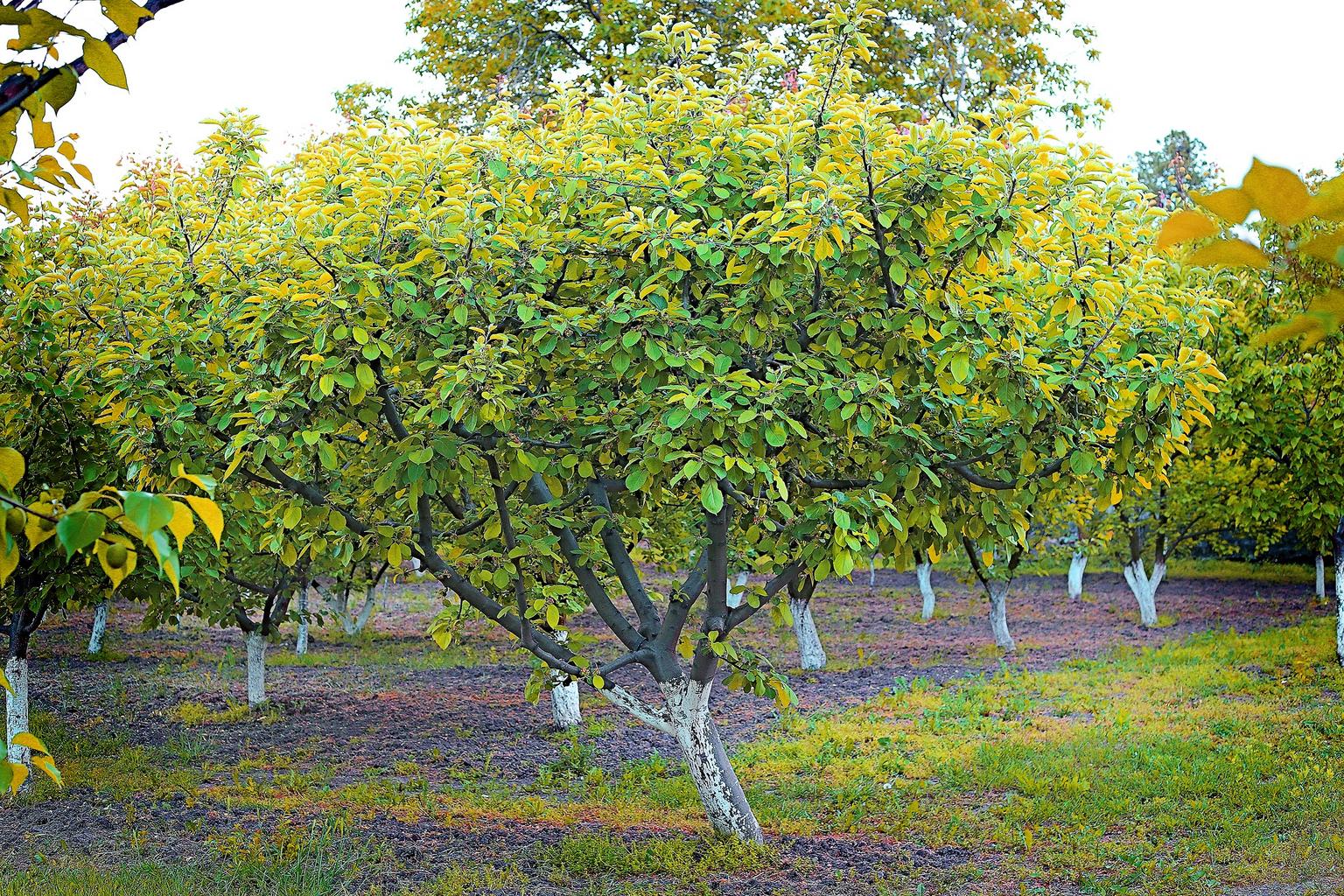


Comments